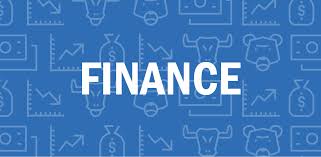A lease ledger is a financial tool used by landlords and property managers to track and manage transactions related to a rental lease. It serves as a chronological log of all charges, payments, fees, and adjustments made during the term of a lease. While it might appear to be a simple record-keeping sheet, what is a lease ledger powerful document that plays a vital role in maintaining financial transparency, reducing disputes, and supporting efficient property management.
Understanding the lease ledger
At its core, a lease ledger outlines every monetary event connected to a lease agreement. It begins with the tenant’s information, lease start and end dates, and agreed-upon rent amount. From there, each entry records charges for rent, security deposits, late fees, utility reimbursements, and other related expenses. Payments made by the tenant are logged with the date, amount, and remaining balance.
The ledger presents a running total that shows at any given time whether a tenant is current, has a credit, or has an outstanding balance. For landlords, this helps manage rental income. For tenants, it provides a clear record of payments and charges over time.
Key components of a lease ledger
A complete lease ledger typically includes the following details:
- Tenant name and property/unit address
- Lease term, including start and end dates
- Monthly rent amount and due date
- Transaction date
- Description of each entry (e.g., rent, payment, late fee)
- Charges (debits) and payments (credits)
- Running balance after each entry
All of this information is logged in a structured format, often using spreadsheets or property management software.
Why landlords should use a lease ledger
There are several important reasons why landlords and property managers should maintain a lease ledger.
1. Tracks payment history clearly
A lease ledger provides a month-by-month history of what the tenant has paid and when. If a dispute arises about missed or partial payments, the ledger can serve as proof. This is particularly useful if a legal eviction process is required, as courts typically expect landlords to present clear financial documentation.
2. Prevents miscommunication
Tenants may occasionally question whether they’ve paid rent or why they were charged certain fees. A well-maintained lease ledger eliminates confusion by showing a clear and objective timeline of all financial transactions.
3. Simplifies financial reporting
For landlords managing multiple properties, a lease ledger helps organize income by unit or tenant. This makes it easier to generate reports, track rent trends, and prepare for tax season.
4. Supports budgeting and planning
Lease ledgers also help landlords forecast income and identify cash flow problems. By reviewing ledgers across units, landlords can assess which tenants pay reliably and which may require closer attention or lease review.
5. Serves as legal documentation
If a landlord ever needs to initiate an eviction or address a financial dispute in court, the lease ledger becomes a critical piece of evidence. A detailed and accurate ledger can make or break a legal case.
Final thoughts
A lease ledger is more than just a list of rent payments—it is a vital financial record that supports accountability, transparency, and professional property management. Whether managing one rental property or an entire portfolio, using a lease ledger ensures that every dollar is accounted for and every transaction is documented. In the long run, it reduces errors, streamlines operations, and builds trust between landlords and tenants.

